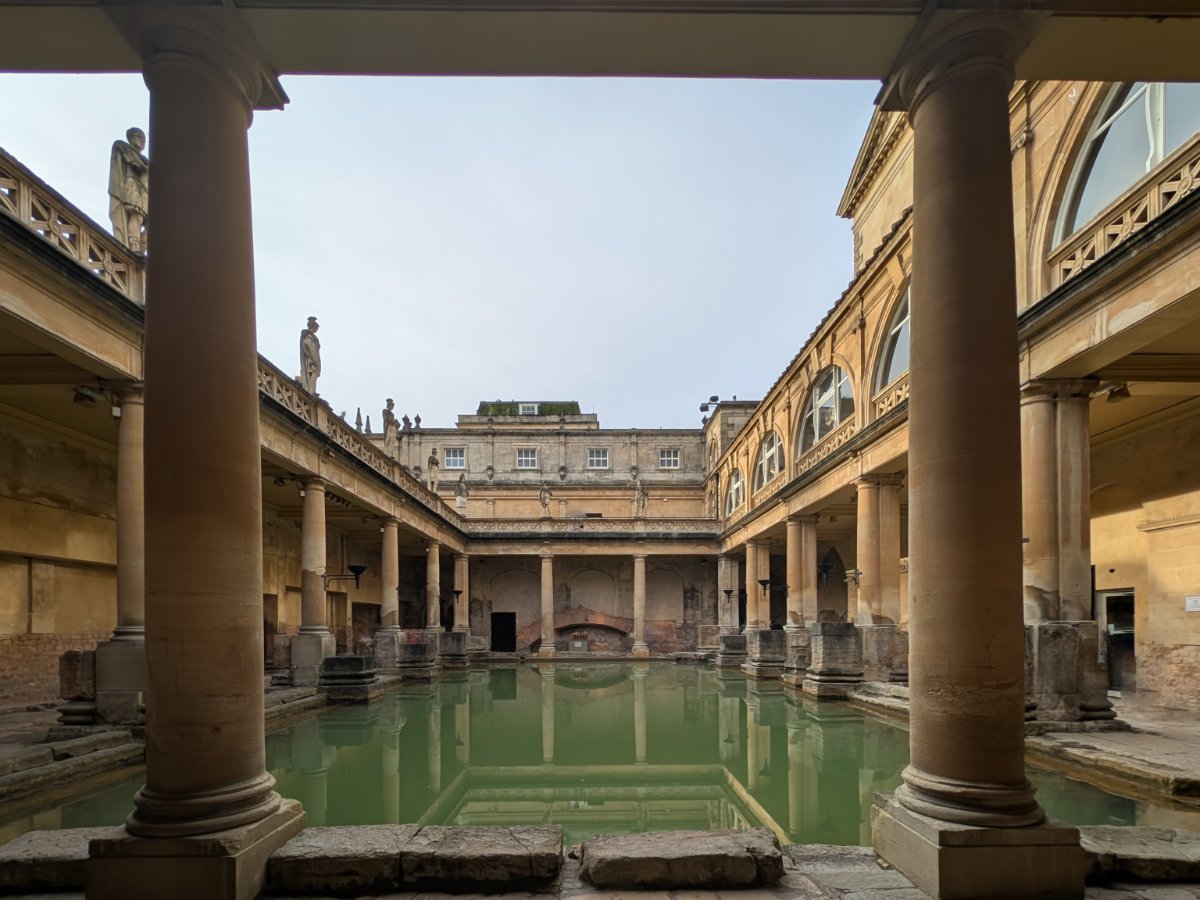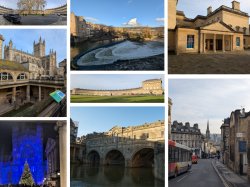I say this a lot when doing these write-ups but I'll reiterate it for those new here and those not paying attention - I do love me a bit of history. This probably skews my attitude towards all things historical, but I do think there are a few things that transcend that love, a handful of landmarks dotted around the world where even if you couldn't give a monkeys about yesteryear, they're still worth seeing. Today's destination is just that, to some history will always be little more than a handful of rocks, but thanks to its deep history and fascinating geology the Roman Baths, at Bath, are really something special. In the heart of the already beautiful and historic city of Bath, the entire city being a UNESCO World Heritage site, is a surprisingly sprawling complex of buildings and baths just begging to be explored, and if you haven't already maybe we can convince you today...
Getting to Bath is fairly straightforward, it sits south of the M4 and south-west of Bristol, with multiple A-roads able to get you here from most directions. For such an ancient city, its central roads are surprisingly forgiving and easy enough to navigate, although parking can be a challenge - it is a small centre which I actually think has done quite well in terms of providing parking options, but peak summer or (as we visited) during the Christmas Markets you might be fighting for spaces. There are plenty of open-air car parks and a few covered ones dotted around, but for convenience, we opted for the Southgate car park - just a short walk from the entrance to the Roman Baths. Public transport is naturally just as simple to navigate, with Bath Spa train station more-or-less next to the aforementioned car park. Once you've made your way up Stall Street the Roman Baths should come into view, in the shadow of Bath Abbey, turn under the columns into the Abbey churchyard and look for the queues/ropes on your right - these mark the entrance to the baths.
So as mentioned above, the Roman Baths are bigger than I had originally expected, I had seen many pictures of the iconic Great Bath but had never known about the other areas beyond it, so you have plenty to explore. You'll also get an audioguide included with the cost of admission, so following that will keep you moving in the correct direction all while learning a little along the way. You will initially leave from the reception, a later Victorian era addition to the Roman baths, to the overview of the Great Bath, from above you get great views (plus Bath's cathedral in the background as the icing on the cake), with the Roman statues again part of the Victorian era additions to the baths. As you make your way around and into the other end of the sheltered walk you will get your first glimpses of the Sacred Spring - these are the waters of the natural hot spring, with the waters sitting around 46°C, as it has done for thousands of years, you can see the steam and bubbles rising through the water, especially on a cold winters day like when we visited.
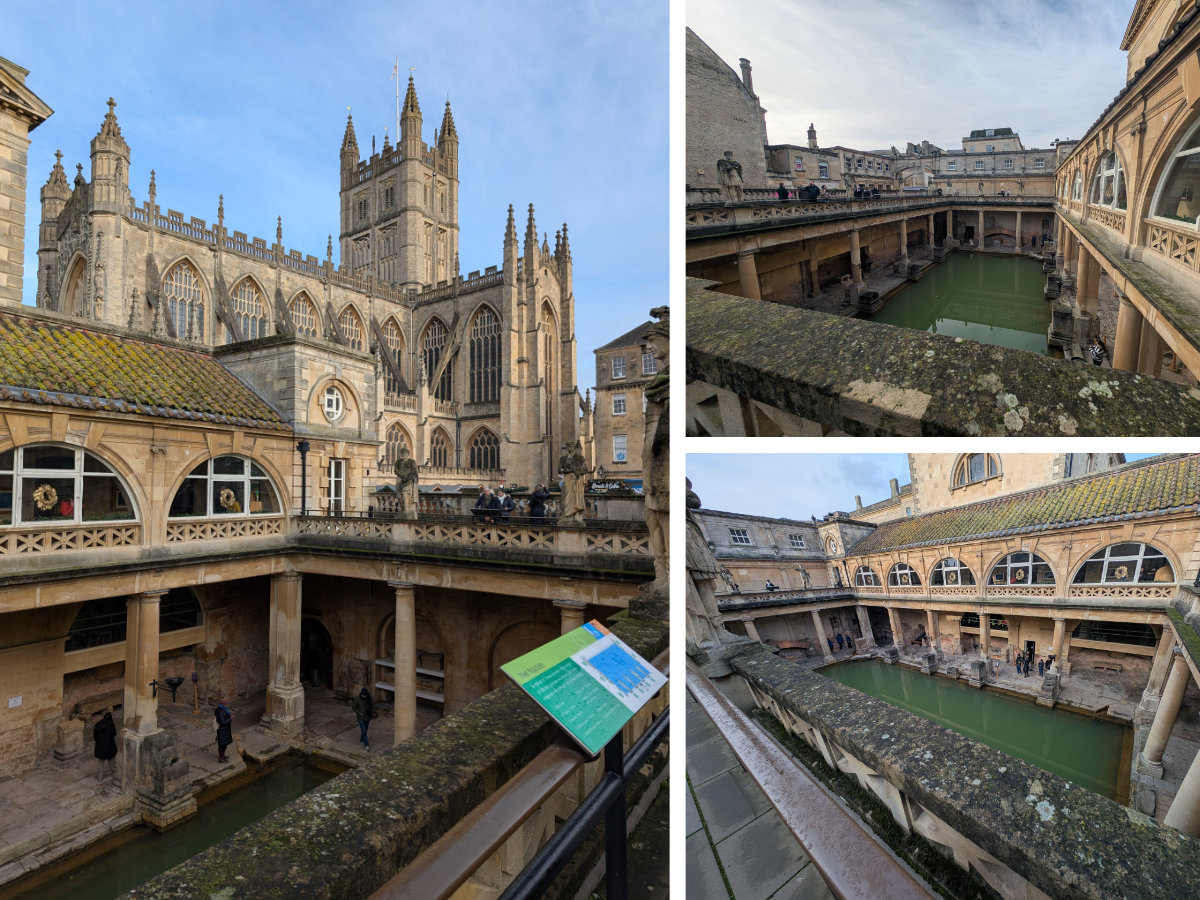
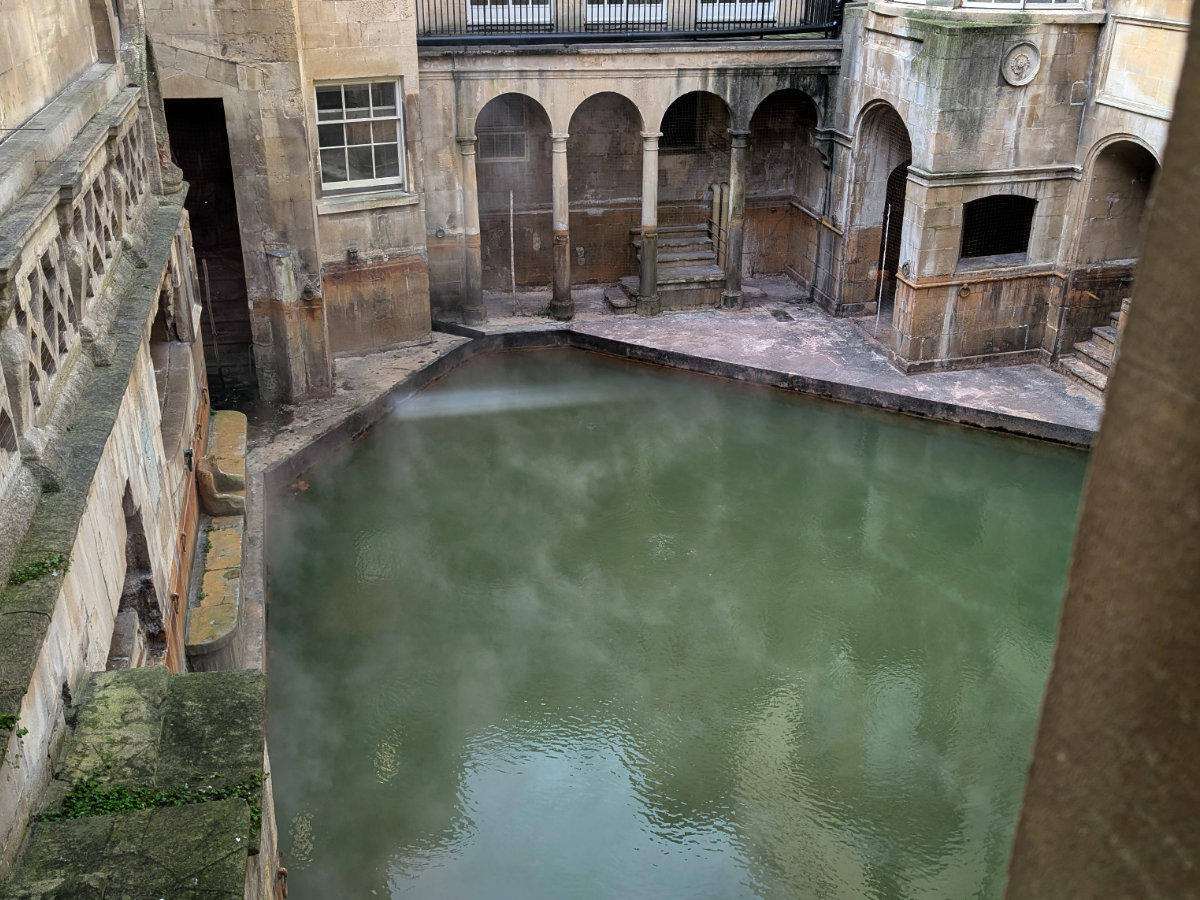
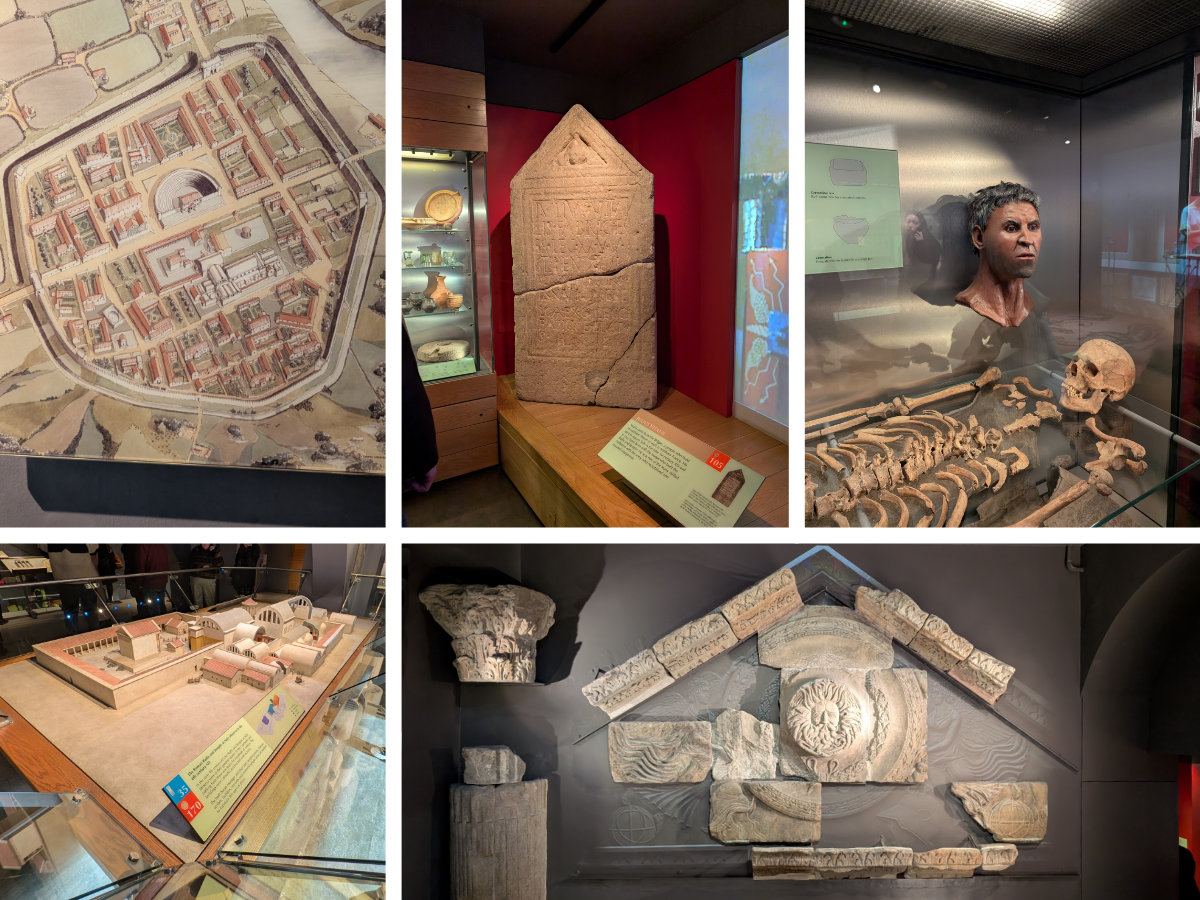
Circle around the top of the Great Bath and enter through the doors to begin the museum portion of the tour - the Roman Baths have a lovely collection of dioramas and models to help conceptualise the space as it would have been in the past, plus many preserved sections of art, fascia and just general items from the day-to-day life of the Romans who lived here at the time. The Temple Pediment and its accompanying projection look incredible as you descend the stairs, and my personal favourite thing here was the Curse Tablets - messages inscribed on lead or pewter, thrown into the spring as prayers to the spirit of the goddess who dwelt there. All of the items on display here are well catalogued and nicely displayed, the museum flows well and provides interesting information from the audio tour as you go around, but before you know if you will be heading back outside to see the Great Bath from ground level.
Down on the floor of the Roman Baths, below where you entered and right up against the waters. Now you must not touch the waters here, as it is untreated and the bacteria content is potentially dangerous - don't fret though, the end of the tour will give you a chance to experience the spring waters first hand. If you really did want to bathe in the waters of the Bath spring then the nearby Thermae Bath Spa draws its waters from the same place as the Romans did, and this spa is just around the corner from the Roman Baths. As you follow the walk and snap your photos you will see how the Roman Baths are actually a network of bath-rooms, sprawling out in various directions beneath the streets of the city. Each room had a specific purpose and through the audio tours, as well as impressive projectors and information boards dotted around, you will begin to get quite the picture of life in the Roman Baths. Once you have done your lap of the swimming pools, cold rooms, changing rooms and gymnasium then it is time to make your way out, but your final reward is a chance to experience the waters of the Roman Bath first-hand, this time in a safe way. The water fountain at the end of the tour provides purified and safe spring water for you to enjoy, a mildly unpleasant experience if I'm being honest but a must-do as you are here: the main problem for me is that the water is, of course, warm! I've always preferred my drinking water ice cold if possible, but as it's a hot spring it would be wrong to drink it any other way...
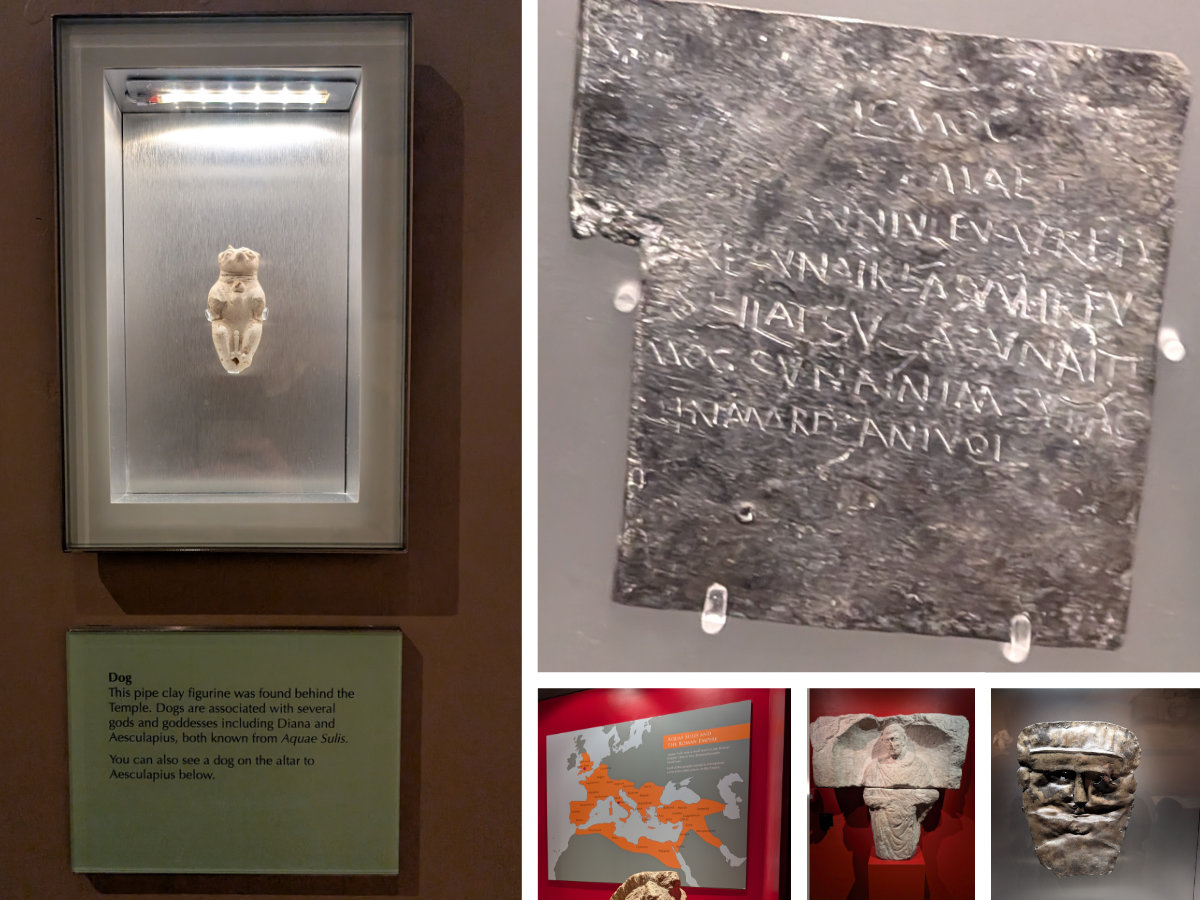
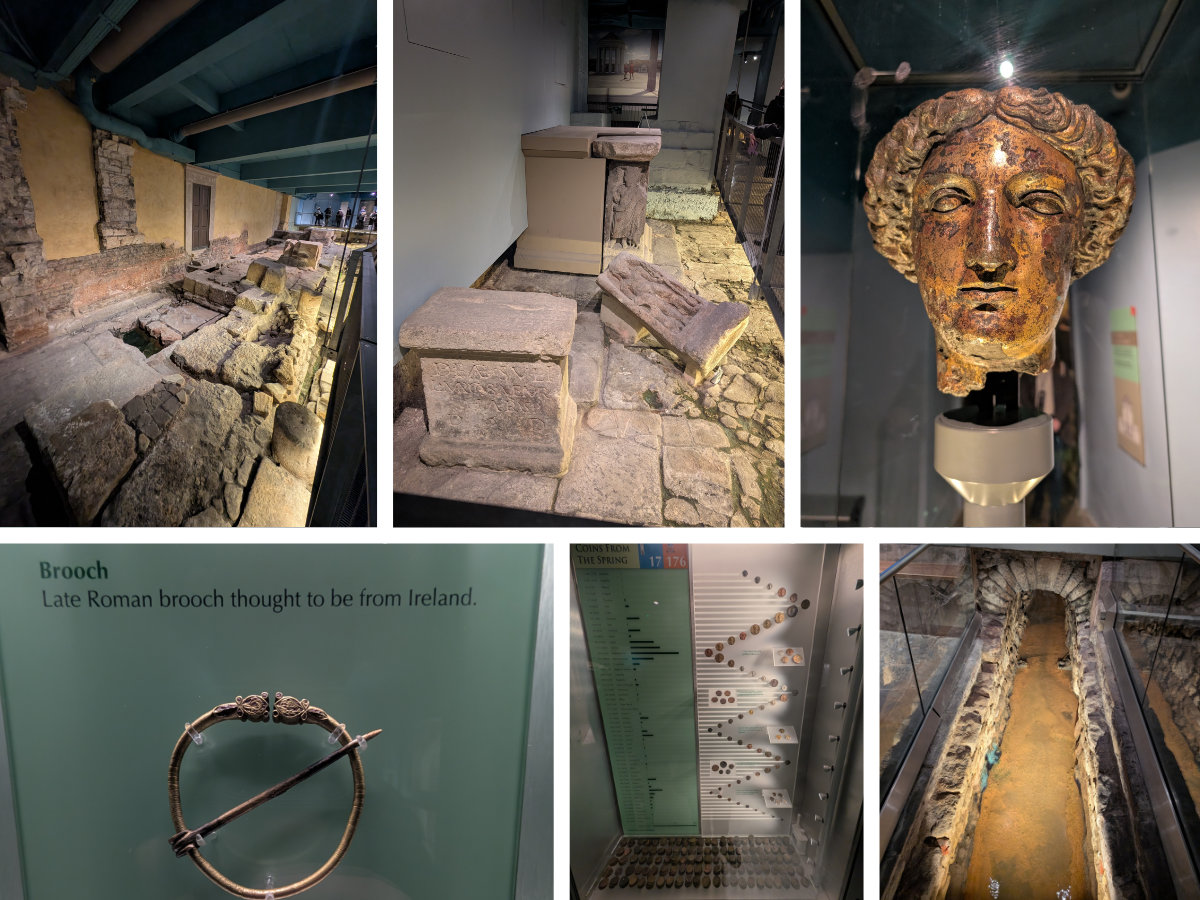
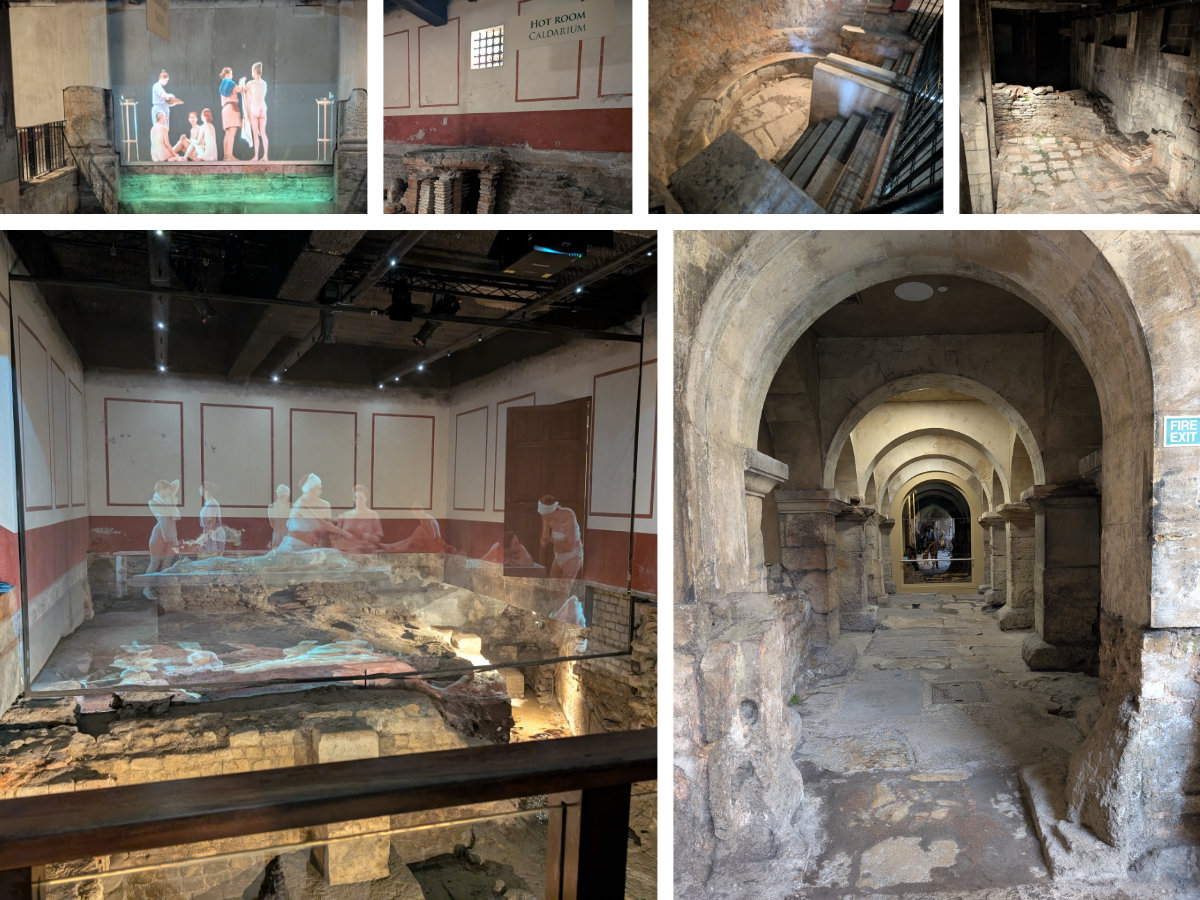
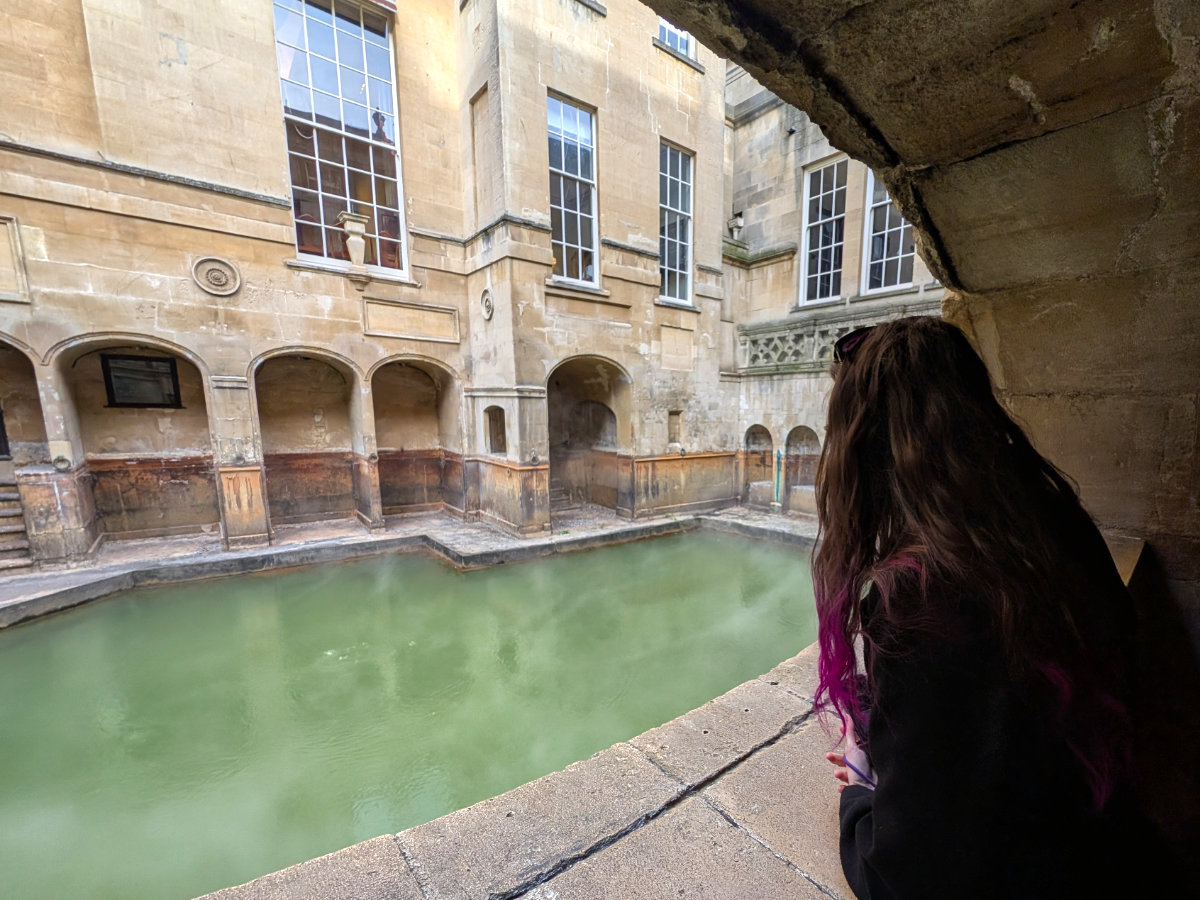
So for those uninitiated with them - what exactly are the Roman Baths? I won't spoil everything, as your visit will tell you all you need to know about the history of the site, but I will give you a quick overview. The spring itself sources
its water from the Mendip Hills, sinking down more than 2 miles
underground before geothermal energy and pressure heats it to near
boiling point while pushing the water through faults in the limestone
and back to the surface - more than 1 million litres of water reach the
surface daily. During the early reign of the Romans in Britain a temple was built on the site, leading to the development of a small urban settlement known as Aquae Sulis ("The water of Sulis", Sulis being a Celtic god of the thermal spring here). In fact, the site was likely used as a place of worship by the Celts for many years prior to the arrival of the Romans. The public baths here, which allowed anyone to visit and bathe, were used throughout Roman rule in the area and would have been a social gathering place and something a centre for the people here. Whilst there may be issues with the water quality today, the green algae bloom would have not been an issue during the time of the Romans, as the original structure had a roof protecting the waters from light and limiting bacterial growth. The building you see today is the result of the original Roman baths falling partly into ruin and many modifications and additions over time, making the Roman Baths an enthralling walk throughout much of modern British history, all the way up to the Victorians. The public was able to swim in the waters of the baths as recently as the 1970s, however, a death caused by bacteria in the waters resulted in Naegleriasis caused the bath to shut for years and led to the decision to block access to bathers forever. Of course, you can still experience safe spring water via the nearby Spa and the drinking water at the end of the tour.
I feel like the Roman Baths are a bit of a default must-see location if you are in Bath, it is a great attraction in its own regard, well preserved for its age, arguably a bucket list item for history lovers but just an interesting hour walk around some of Britain's best history. Britannia under the rule of the Romans is a fascinating time, and having the opportunity to explore the Roman Baths here is something I will always remember. Once you've completed your exploration of the baths you're lucky enough to be in the city of Bath, a charming centre with plenty of shops and places to eat, plus other iconic Bath attractions to wander around and enjoy - making the city as a whole the perfect day out to get a bit of history, do some shopping and come away having learned something and had a great time in the process.
